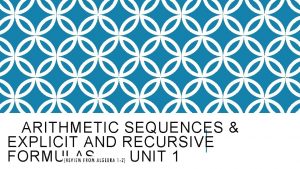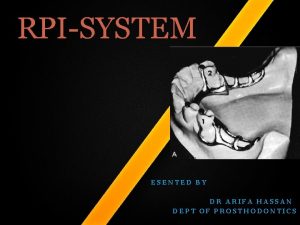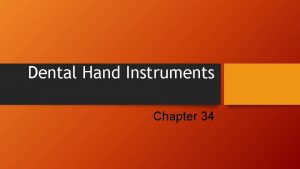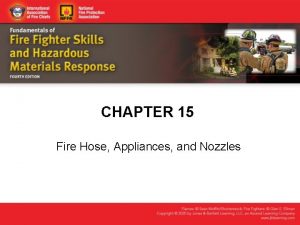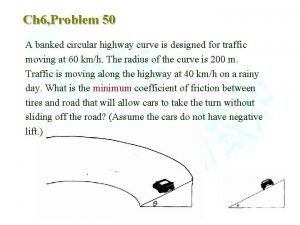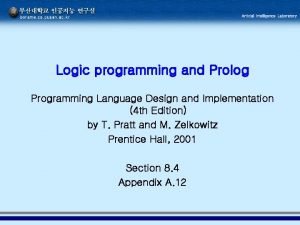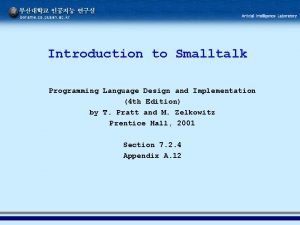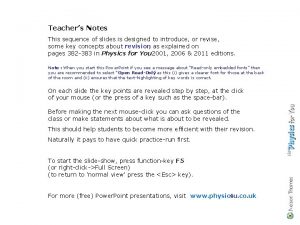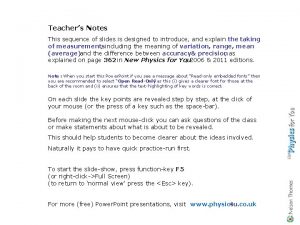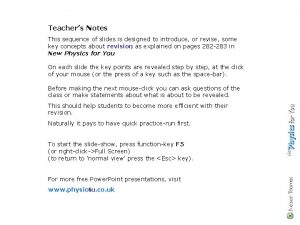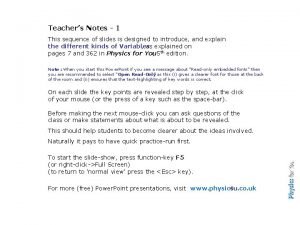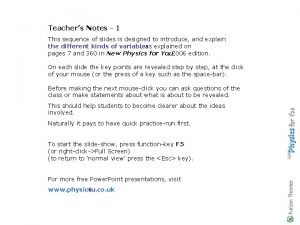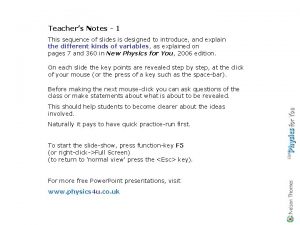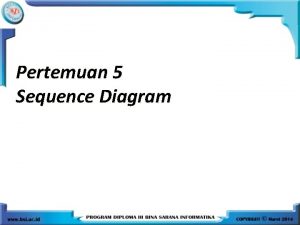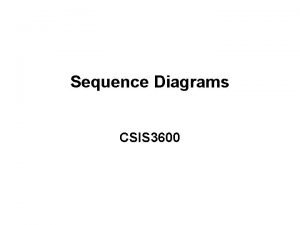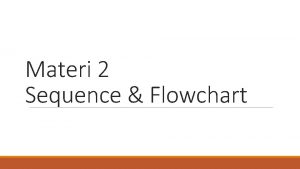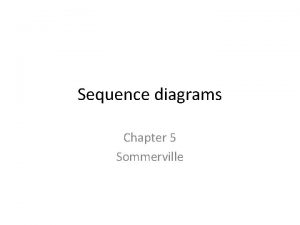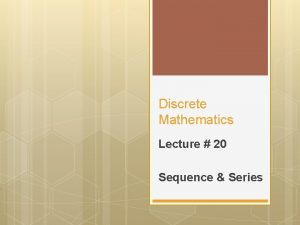Teachers Notes This sequence of slides is designed

























- Slides: 25

Teacher’s Notes This sequence of slides is designed to introduce, and explain, the main types of variables (categoric, continuous) , as explained on page 362 in Physics for You , 5 th edition. Although ordered & discrete variables are no longer in the GCSE specs, they are included later in this powerpoint. It should be usedafter the other Power. Point on ‘Variables’. Note : When you start this Power. Point if you see a message about “Read-only embedded fonts” then you are recommended to select “Open Read-Only ” as this (i) gives a clearer font for those at the back of the room and (ii) ensures that the text-highlighting of key words is correct. On each slide the key points are revealed step by step, at the click of your mouse (or the press of a key such as the space-bar). Before making the next mouse-click you can ask questions of the class or make statements about what is about to be revealed. This should help students to become clearer about the ideas involved. Naturally it pays to have quick practice-run first. To start the slide-show, press function-key F 5 (or right-click->Full Screen) (to return to ‘normal view’ press the <Esc> key). For more (free) Power. Point presentations, visit www. physics 4 u. co. uk

Working Scientifically : Types of Variables Physics for You, 5 th edition, page 362

Learning Objectives You should learn : • About different types of variables, • How to identify them when doing your practical work.

Revision of variables Can you remember what …an independent …a control is meant by… variable?

Revision of variables Summary: The independent variable is the one that you change or select. The dependent variable is the one changes as a result, and that you measure. The control variables must not change, so that it is a fair test.

Types of variables There are other types of variables that you may meet. Their names are: • Categoric • Continuous We’ll look at two examples of each one.

Categoric variables These have word labels. Example 1 In this experiment on conduction of heat: The Categoric variables are: copper, iron, glass

Categoric variables These have word labels. Example 2 In this experiment to find the resistance of wires: The Categoric variables could be: copper wire, iron wire, steel wire, etc

Continuous variables These variables can have any numerical value. Example 1 In this experiment to investigate the stretching of a spring: The continuous variable is: length of the spring = 15. 1 cm, 15. 5 cm, 15. 9 cm …

Continuous variables These variables can have any numerical value. Example 2 In this experiment to investigate the cooling of water: The continuous variable is: the temperature of the water = 70. 6 o. C, 68. 4 o. C, 66. 2 o. C …

In summary • Categoric These have word labels. • Continuous These can have any numerical value.

Learning Outcomes You should now: • Understand the difference between - Categoric, and - Continuous variables • Be able to identify these variables when doing your practical work.

For more details, see: Ø Physics for You, 5 th edition, page 362 For more free Power. Points, visit Ø the web-site at www. physics 4 u. co. uk

If you are connected to the web at the moment, click below to see what’s available: http: //www. physics 4 u. co. uk/

There are 2 other kinds of Variables that are occasionally used. (For the UK GCSE exams you don’t need these. ) • Ordered These are categoric variables that can be ranked, in an order. • Discrete These are like a continous variable that only have whole number values. can

Ordered variables These are categoric variables that can be ranked, in an order. Example 1 In this experiment to find the resistance of wires: The Ordered variables could be: thick copper wire, thinner copper wire, very thin copper wire.

Ordered variables These are categoric variables that can be ranked, in an order. Example 2 In an experiment to investigate a falling parachute: The Ordered variables could be: large parachute, medium parachute, small parachute.

Discrete variables These variables can only have whole number values, 1, 2, 3, … Example 1 In an experiment to investigate the stretching of a spring: The discrete variables are: 1 weight, 2 weights, 3 weights, …

Discrete variables These variables can only have whole number values, 1, 2, 3, … Example 2 In an experiment on the cooling of an insulated beaker: The discrete variables are: number of layers of insulation = 1 layer, 2 layers, 3 layers, …

In summary • Categoric These have word labels. • Continuous These can have any numerical value. • Ordered These categoric variables can be ranked, in an order. • Discrete These are like continuous variables but can only have whole number values.

Learning Outcomes You should now: • Understand the difference between - Categoric, - Continuous - Ordered, and - Discrete variables • Be able to identify these variables when doing your practical work.

For more details, see: Ø Physics for You, 5 th edition, page 362 For more free Power. Points, visit Ø the web-site at www. physics 4 u. co. uk

If you are connected to the web at the moment, click below to see what’s available: http: //www. physics 4 u. co. uk/


 Kim kroll
Kim kroll A small child slides down the four frictionless slides
A small child slides down the four frictionless slides Each of the boxes shown is pulled for 10 m
Each of the boxes shown is pulled for 10 m Nucleotide sequence vs amino acid sequence
Nucleotide sequence vs amino acid sequence Pseudocode selection
Pseudocode selection What is the difference between finite and infinite sequence
What is the difference between finite and infinite sequence Convolutional sequence to sequence learning
Convolutional sequence to sequence learning Site:slidetodoc.com
Site:slidetodoc.com Cube wisc
Cube wisc Shaft is designed on basis of
Shaft is designed on basis of Specially designed instruction chart
Specially designed instruction chart Tooth-borne
Tooth-borne Every system is designed to get the results it gets
Every system is designed to get the results it gets Baldwin family health care
Baldwin family health care A program that runs in the background without you knowing
A program that runs in the background without you knowing Designed & developed by gstn
Designed & developed by gstn Dental hand instrument
Dental hand instrument Bogey negotiation
Bogey negotiation An internet is a collection of utility programs designed
An internet is a collection of utility programs designed Water thief appliance
Water thief appliance An unbanked circular highway curve
An unbanked circular highway curve A programmable electronic device designed to accept data
A programmable electronic device designed to accept data For safe design a friction clutch is designed assuming
For safe design a friction clutch is designed assuming Prolog basic programs
Prolog basic programs Small talk programming language
Small talk programming language Designed & developed by gstn
Designed & developed by gstn







